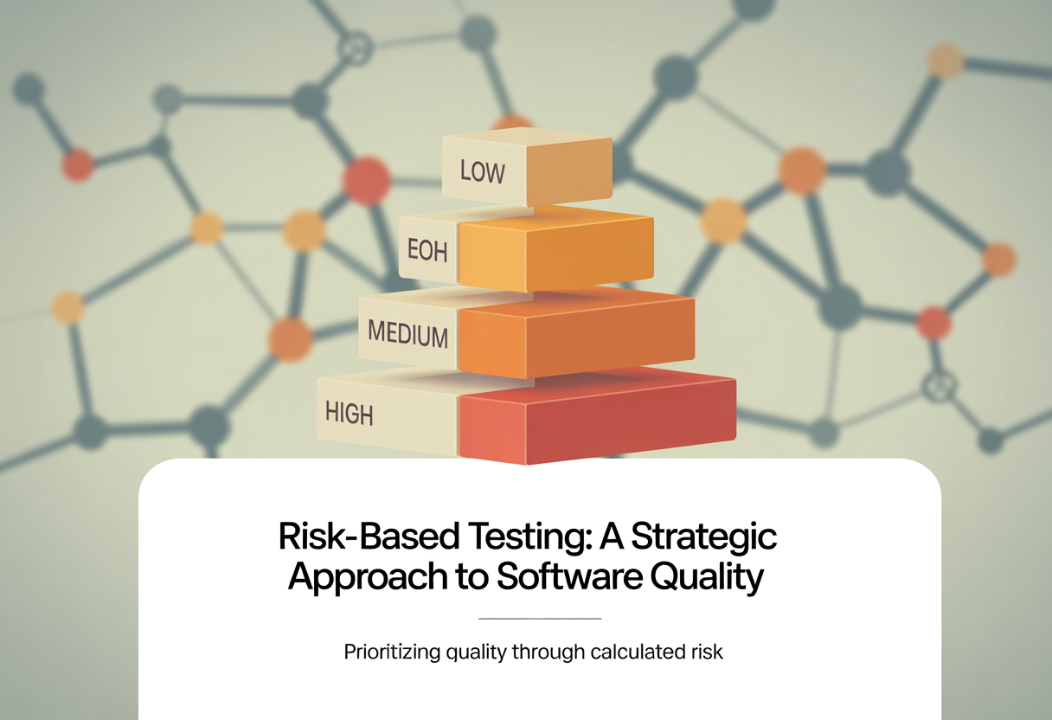 CYBER SECURITY
CYBER SECURITY Risk-Based Testing: A Strategic Approach to Software Quality

Imagine launching a healthcare app only to discover a critical bug that corrupts patient data. Traditional testing might have missed it because it focused on "checking all boxes" rather than prioritizing high-risk areas. This is where risk-based testing (RBT) shines.
Risk-based testing is a QA strategy that identifies, prioritizes, and tests software components based on their potential impact on business goals, user safety, and system stability. In 2025, as software grows more complex and user expectations soar, RBT isn’t just a luxury—it’s a necessity.
I’ve seen teams waste weeks testing low-risk features while critical modules crumble under real-world use. Let’s explore how to avoid that.
Why Risk-Based Testing Matters in 2025
1. Aligning QA with Business Priorities
RBT forces teams to ask: "What’s the cost of failure?" For a fintech app, a payment gateway bug could mean lost revenue and regulatory fines. A UI typo on a settings page? Less critical.
Real-World Example:
A banking client once prioritized testing their transaction logic over cosmetic issues. Post-launch, they avoided a $2M+ loss from potential payment failures.
2. Cost Efficiency & Resource Optimization
Testing everything is like searching for a needle in a haystack and inspecting every strand of hay. RBT focuses on the needles.
- Teams reduce redundant tests by 30–50% (based on my project data).
- Automation efforts align with high-risk areas, maximizing ROI.
3. Enhancing User Trust & Brand Reputation
A single data breach or checkout failure can tarnish a brand for years. RBT safeguards critical user journeys.
Case Study:
An e-commerce platform used RBT to stress-test their checkout system before Black Friday. Result? Zero crashes during peak traffic and a 20% sales boost.
Step-by-Step Guide to Implementing Risk-Based Testing
1. Risk Identification
Start by listing all potential risks. I use collaborative workshops with developers, product owners, and even customer support teams.
Pro Tip:
Review past bug reports. If login failures caused 40% of user complaints last year, authentication is a high-risk area.
Methods:
- Brainstorming sessions with cross-functional teams.
- Historical defect analysis to spot recurring issues.
- User feedback to identify pain points.
2. Risk Assessment & Prioritization
Not all risks are equal. Use a risk matrix to categorize them by likelihood and impact.
Simple Scoring Model:

Focus on risks scoring 12+ (e.g., 4×3 or higher).
3. Test Planning & Execution
Allocate resources based on risk levels:
- High-risk: 70–80% of test effort (e.g., boundary tests, security scans).
- Medium-risk: 15–20% (e.g., integration tests).
- Low-risk: 5–10% (e.g., exploratory testing).
Agile Integration:
In sprint planning, create a “risk backlog” for high-priority tests. For a travel booking app, test payment processing before seat selection.
4. Risk Mitigation & Monitoring
- Automate regression tests for high-risk areas to catch issues early.
- Use contingency plans for unresolved critical risks (e.g., a fallback payment processor).
- Track metrics like defect escape rate and test coverage by risk level.
Best Practices for Effective Risk-Based Testing
1. Collaborative Risk Workshops
Involve stakeholders early. I once saw a security engineer flag a data encryption flaw developers had overlooked.
2. Leverage Automation Wisely
- Use tools like Selenium for high-risk UI flows.
- Postman for API security testing.
- OWASP ZAP for vulnerability scans.
3. Reassess Risks Continuously
After major updates, ask: "Has our risk profile changed?" A new feature might introduce dependencies on critical modules.
4. Balance Speed and Coverage
For low-risk features, use exploratory testing or crowdtesting. Save formal test cases for high-stakes areas.
Industry-Specific Case Studies
1. Fintech: Preventing Transaction Failures
A digital wallet startup used RBT to focus on fund transfer validation. They reduced payment errors by 60% and cut testing time by 35%.
2. Healthcare: Ensuring Compliance in EHR Systems
A hospital’s EHR system prioritized patient data integrity and HIPAA compliance. RBT helped them pass audits with zero critical findings.
3. Automotive: Safety-Critical Software Validation
An autonomous vehicle company applied RBT to sensor calibration algorithms. The result? 90% fewer safety-related defects during trials.
FAQs About Risk-Based Testing
1. How does RBT differ from traditional testing?
Traditional testing aims for broad coverage; RBT focuses on what matters most. It’s the difference between a shotgun and a sniper rifle.
2. What are the biggest challenges in RBT?
- Getting stakeholder buy-in (use case studies to convince them).
- Keeping risk assessments updated as projects evolve.
3. Can RBT work in Agile environments?
Absolutely! Align risk backlogs with sprint goals. For example, test a new API’s error handling before its UI integration.
4. What metrics prove RBT’s success?
- Reduction in critical post-release defects.
- Test effort saved on low-risk areas.
- Improved team confidence in releases.
5. How to handle low-risk areas?
Use lightweight checks or delegate to crowdsourced testers. Never ignore them entirely—small bugs can still annoy users.
Conclusion & Next Steps
Risk-based testing isn’t just a methodology—it’s a mindset. By focusing on what could go wrong and how badly it would hurt, you’ll ship better software faster.